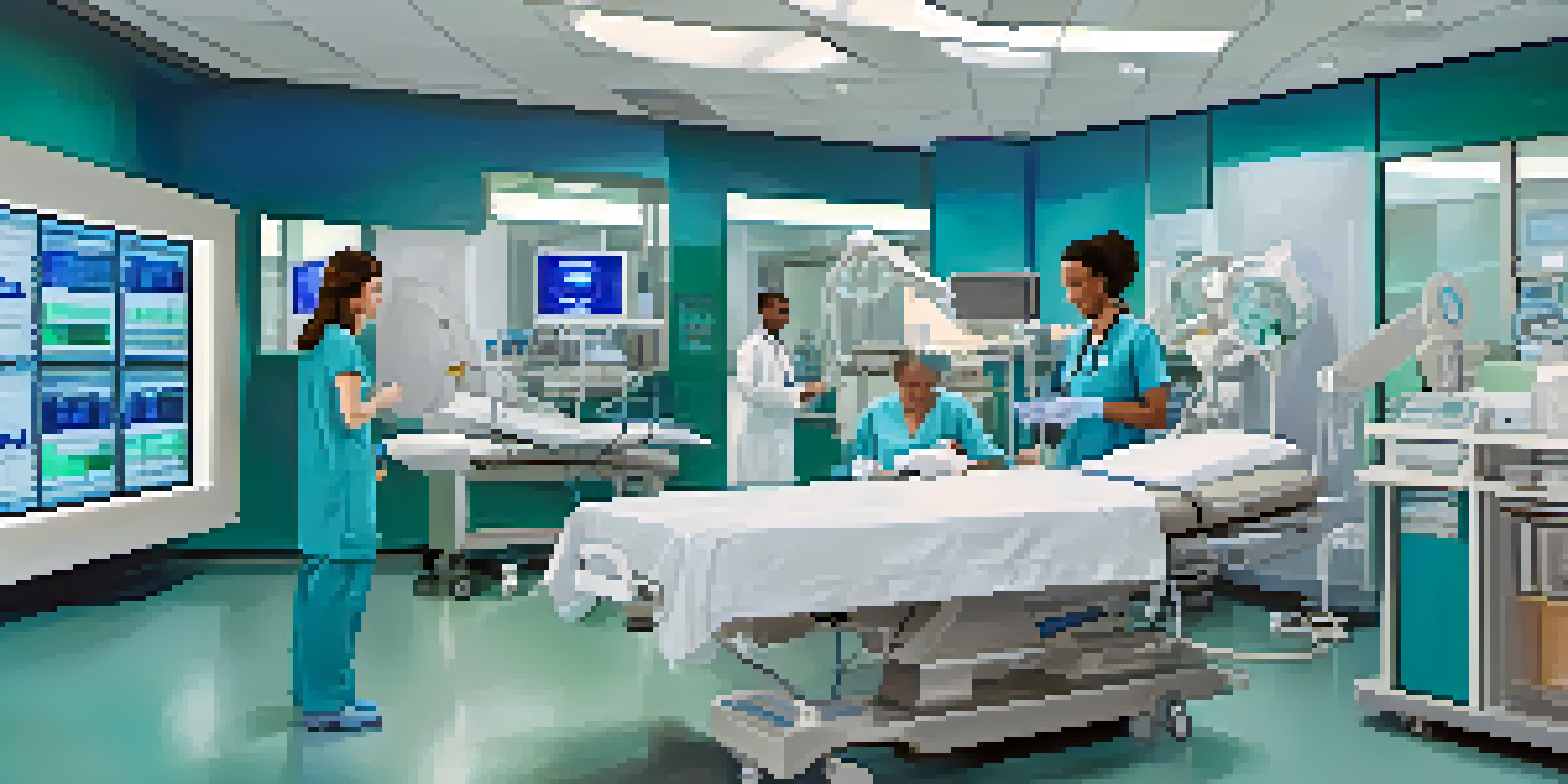The Role of EHRs in Emergency Care Management

What are Electronic Health Records (EHRs)?
Electronic Health Records (EHRs) are digital versions of patients' paper charts. They contain a comprehensive collection of patient information, including medical history, medications, allergies, and test results. EHRs are designed to be shared across different healthcare settings, making them a vital tool in managing patient data efficiently.
The greatest medicine of all is to teach people how not to need it.
The transition from paper records to EHRs has revolutionized how healthcare providers access and manage patient information. With EHRs, data is available at the click of a button, reducing the time spent searching for critical information. This immediacy is especially crucial in emergency situations where every second counts.
Furthermore, EHRs help standardize information, ensuring that all healthcare providers have access to the same data. This consistency is key in emergencies, where clear communication can significantly impact patient outcomes.
Enhancing Communication in Emergency Situations
In emergency care, effective communication among healthcare teams is essential. EHRs facilitate this by providing a centralized platform where all team members can access and update patient information in real-time. This means that when a patient arrives, their medical history is readily available, allowing for quicker decision-making.

For example, if a patient is brought in unconscious, the medical team can quickly check their EHR for allergies or existing conditions. This immediate access helps prevent potential complications and ensures that the right treatments are administered without delay.
EHRs Enhance Emergency Care Efficiency
Electronic Health Records streamline access to vital patient information, improving decision-making in urgent situations.
Moreover, EHRs can integrate data from various sources, including previous hospital visits and lab results. This holistic view empowers healthcare providers to make informed decisions, ultimately improving the quality of care delivered in emergencies.
Improving Patient Safety with EHRs
Patient safety is a top priority in emergency care, and EHRs play a significant role in enhancing it. By providing alerts for allergies, drug interactions, and other critical warnings, EHRs help prevent medical errors that could compromise patient safety. These safeguards are particularly important in fast-paced emergency environments.
Data is the new oil. It’s valuable, but if unrefined, it cannot really be used.
For instance, when a physician prescribes medication, the EHR can instantly check for potential interactions with the patient’s current medications. This real-time feedback can save lives by preventing adverse reactions that might occur if the information was not readily available.
Additionally, comprehensive EHRs support better tracking of patient outcomes. By analyzing data over time, healthcare providers can identify trends and areas for improvement, further enhancing safety standards in emergency care.
Streamlining Workflow in Emergency Departments
Emergency departments (EDs) often face high volumes of patients, leading to pressure on staff and resources. EHRs streamline workflows by automating routine tasks, such as patient check-ins and documentation. This automation allows healthcare professionals to focus more on patient care rather than administrative duties.
For example, EHRs can facilitate quick triage processes, enabling staff to categorize patients based on the urgency of their conditions. This organized approach helps ensure that critical cases receive immediate attention, improving overall efficiency in the ED.
Improving Patient Safety with EHRs
EHRs provide critical alerts for allergies and drug interactions, significantly reducing the risk of medical errors.
Moreover, EHRs can provide predictive analytics to forecast patient inflow, assisting in resource allocation. By anticipating busy periods, emergency departments can better manage staffing and equipment, ultimately leading to improved patient care.
Facilitating Data Sharing Across Healthcare Systems
One of the most significant advantages of EHRs is their ability to facilitate data sharing across different healthcare systems. In emergencies, it’s not uncommon for patients to be transferred between facilities. EHRs ensure that essential medical information follows the patient, reducing the risk of information loss.
This seamless data exchange helps healthcare providers quickly familiarize themselves with a patient’s medical history, no matter where the patient has received care. For example, if a patient with a chronic condition is treated in multiple hospitals, their EHR can provide a complete picture of their health status and treatment history.
In addition, this interoperability can extend beyond hospitals to include specialists and primary care providers. Such collaboration ensures that all relevant healthcare providers are informed, leading to more coordinated and effective care.
Supporting Research and Quality Improvement Initiatives
EHRs not only serve immediate clinical purposes but also play a crucial role in research and quality improvement initiatives. By aggregating large amounts of patient data, EHRs can help identify trends, track health outcomes, and assess the effectiveness of treatments over time. This valuable information can lead to enhancements in emergency care practices.
For instance, healthcare organizations can analyze data from EHRs to evaluate the outcomes of specific interventions during emergency situations. This analysis helps identify best practices and areas needing improvement, fostering a culture of continuous quality enhancement.
EHRs Facilitate Seamless Data Sharing
The interoperability of EHRs ensures that essential patient information is readily available across different healthcare systems.
Furthermore, EHRs can facilitate clinical trials and research studies by providing researchers with access to comprehensive patient data. Such research efforts ultimately contribute to better evidence-based practices in emergency care.
Challenges and Considerations in EHR Implementation
While EHRs offer many benefits, their implementation in emergency care settings is not without challenges. One common concern is the potential for system overload, especially in high-pressure environments like emergency departments. If the EHR system is slow or experiences downtime, it can hinder care delivery when it is needed most.
Additionally, healthcare staff may require training to effectively use EHRs, which can temporarily disrupt workflow. Ensuring that all team members are proficient with the system is vital for maximizing the benefits of EHRs in emergency care.

Moreover, issues related to data privacy and security are critical considerations when handling sensitive patient information. Ensuring robust security measures are in place is essential to protect patient data and maintain trust in the healthcare system.